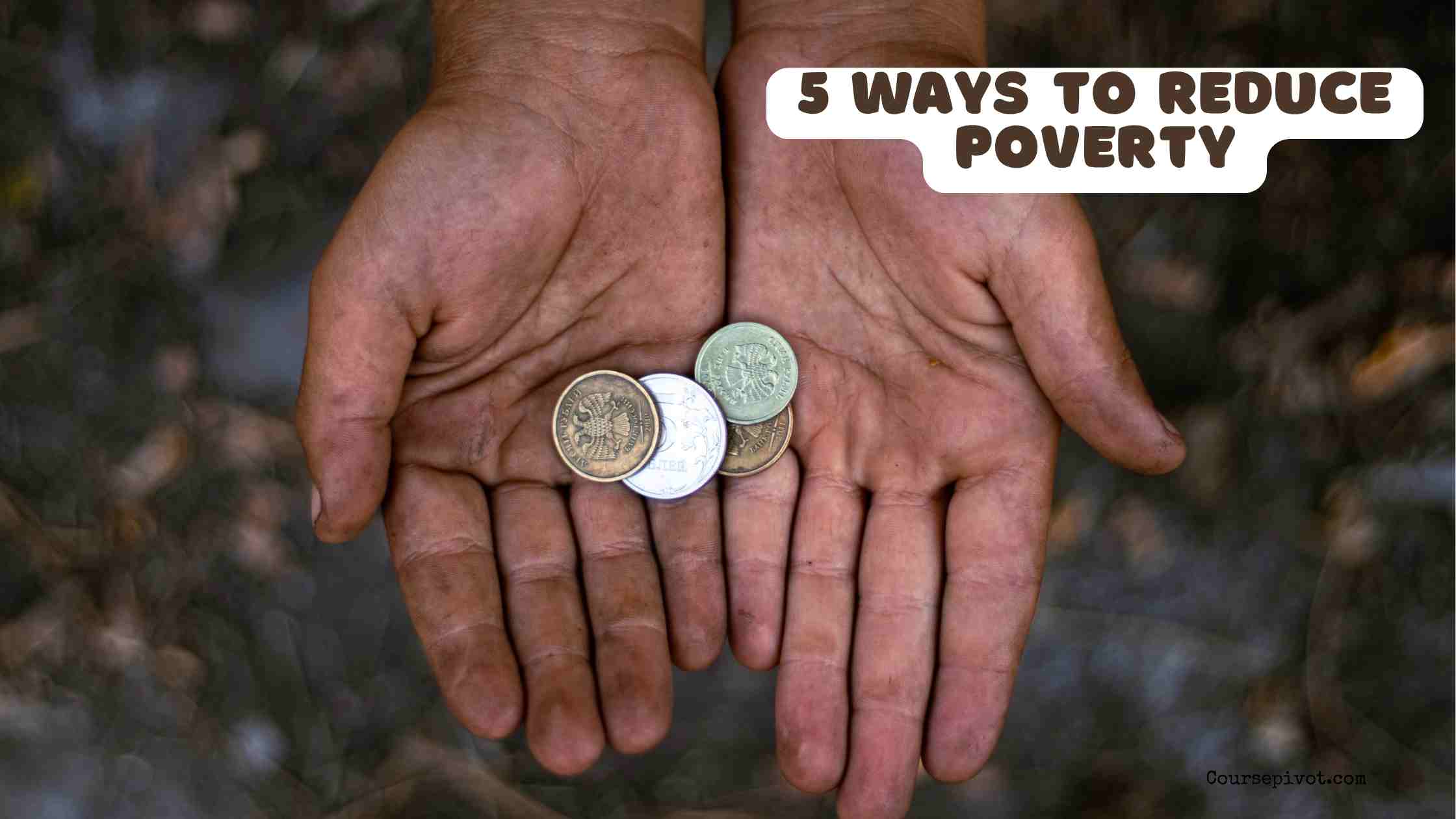
5 Ways to Reduce Poverty
Can you imagine living on less than $2.15 a day? For nearly 700 million people, or 8.5% of the world’s population, this is the reality of global poverty, according to 2023 World Bank data. Poverty reduction is a complex challenge, but targeted strategies can lift millions out of hardship. This blog explores five ways to reduce poverty worldwide, offering actionable solutions to poverty that address root causes and empower communities.
Table of Contents
Why Poverty Reduction Matters
Poverty around the world limits access to education, healthcare, and opportunity, perpetuating cycles of hunger and exclusion. It’s linked to higher mortality rates, with 25% of children in poverty facing malnutrition, per UNICEF studies. Tackling poverty issues boosts economies and stability, benefiting all. These poverty solutions aim to create lasting change.
1. Expand Access to Quality Education
Education is a proven path to end poverty, with UNESCO estimating that universal secondary education could cut global poverty by over 50%. It equips people with skills for better jobs, increasing incomes by 10% per year of schooling, per World Bank data. Access to quality education breaks the cycle of poverty worldwide. It’s a cornerstone of how to get out of poverty.
Actionable Step
Support programs building schools in rural areas or training teachers in low-income regions. Donate to organizations like Plan International, which helped 15,000 children access education in 2022. Advocate for policies ensuring free primary education. Volunteer to tutor underserved youth locally.
2. Strengthen Social Protection Systems
Social protection, like cash transfers or food subsidies, lifts millions above the poverty line. In 2019, programs like the Child Tax Credit lifted 7.5 million Americans out of poverty, per the Center for American Progress. Globally, 105 countries introduced 350 social protection measures during 2022–2023, per UN data, but 55% of people lack coverage. These systems are key to poverty alleviation.
Actionable Step
Advocate for universal social safety nets, like unemployment benefits or child grants, in your country. Support NGOs like Concern Worldwide, which runs cash transfer programs in 29 nations. Push for policies making tax credits fully refundable for low-income families. Share poverty articles to raise awareness.
3. Promote Job Creation and Skills Training
Jobs and vocational training are critical for how to solve poverty. A 10% rise in national income can reduce poverty by 20–30%, per DFID studies. Programs like Concern’s Graduation in Rwanda help people like Alexia start businesses, boosting incomes. This addresses poverty problems by fostering self-reliance.
Actionable Step
Support microfinance or skills programs, like those by World Vision, training 15,393 people in 2022. Volunteer with local job fairs or mentorship initiatives. Advocate for policies creating green jobs in renewable energy. Donate to anti-poverty programs focused on entrepreneurship.
4. Invest in Healthcare Access
Healthcare access reduces poverty worldwide by preventing illness-related income loss. Globally, 25% of children face stunting due to malnutrition, per UNICEF, but maternal education cuts this risk by 4.6%. Plan International’s health clinics reached millions in 2022, showing impact. This is vital for fighting poverty.
Actionable Step
Fund organizations building clinics in underserved areas, like World Vision’s maternal health programs. Advocate for universal healthcare policies in your region. Support campaigns addressing third world poverty through vaccinations or clean water. Volunteer with health education drives locally.
5. Enhance Gender Equality in Economic Opportunities
Empowering women economically can boost global GDP by $7 trillion, per a 2023 Moody’s study, significantly reducing poverty rates around the world. Women in agriculture, when given equal resources, increase yields by 20–30%, per FAO data. Gender equality is a game-changer for poverty eradication.
Actionable Step
Support microfinance for women, like Bangladesh’s programs lifting millions via group lending. Advocate for equal pay and land rights laws. Donate to NGOs like Concern Worldwide, promoting gender equity in 29 countries. Mentor women entrepreneurs in your community.
Why These Strategies Work
These solutions for poverty—education, social protection, jobs, healthcare, and gender equality—tackle root causes like inequality and vulnerability. They align with UN Sustainable Development Goals, which aim to end poverty by 2030. Each method empowers individuals, with 90% of program participants reporting better livelihoods, per development studies. Together, they address how to fix poverty holistically.
Extra Tips for Poverty Reduction
- Support Disaster Resilience: Invest in climate-smart agriculture, saving $15 in recovery per $1 spent, per World Bank data.
- Promote Fair Trade: Buy from businesses ensuring fair wages, reducing poverty in the world by supporting ethical markets.
- Engage in Advocacy: Join campaigns like the Borgen Project to influence poverty relief policies globally.
Read Industrial Jobs as a Pull Factor for Immigrants to the US in the 1800s
Key Takeaways
Reducing poverty requires education, social safety nets, job opportunities, healthcare, and gender equality. These ways to reduce poverty in the world empower communities, with data showing significant income and well-being gains. Start by supporting one initiative, like donating to an NGO or advocating locally, to help end poverty. Small actions today can transform lives tomorrow.
Cite this article
You can copy and paste your preferred citation format below.
Martin, L. & Arquette, E.. (2025, July 1). 5 Ways to Reduce Poverty. Coursepivot.com. https://coursepivot.com/blog/5-ways-to-reduce-poverty/



